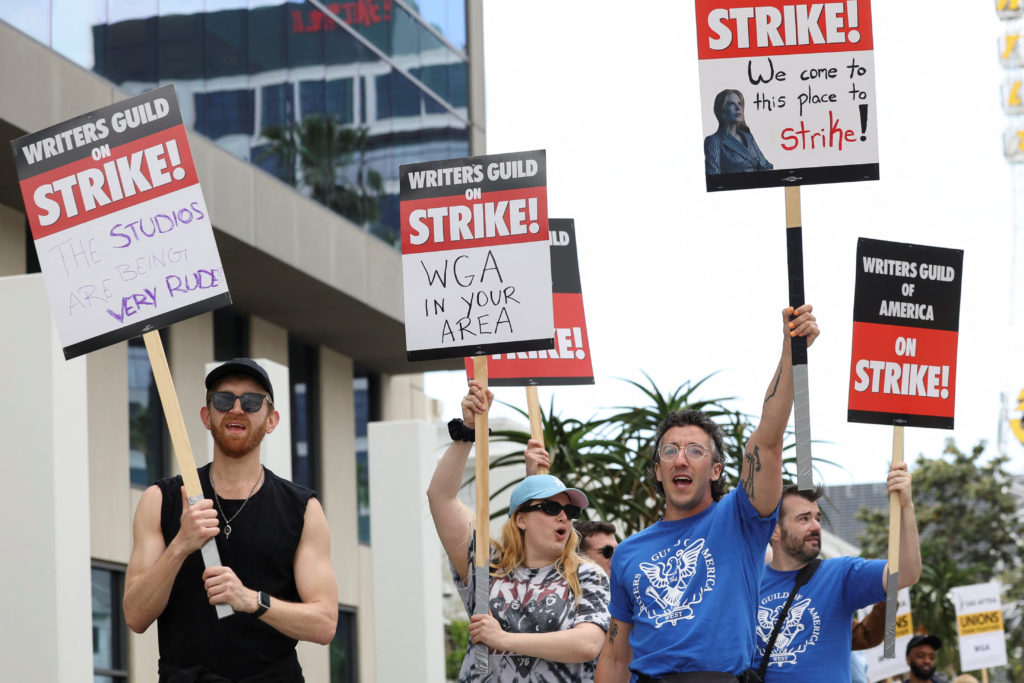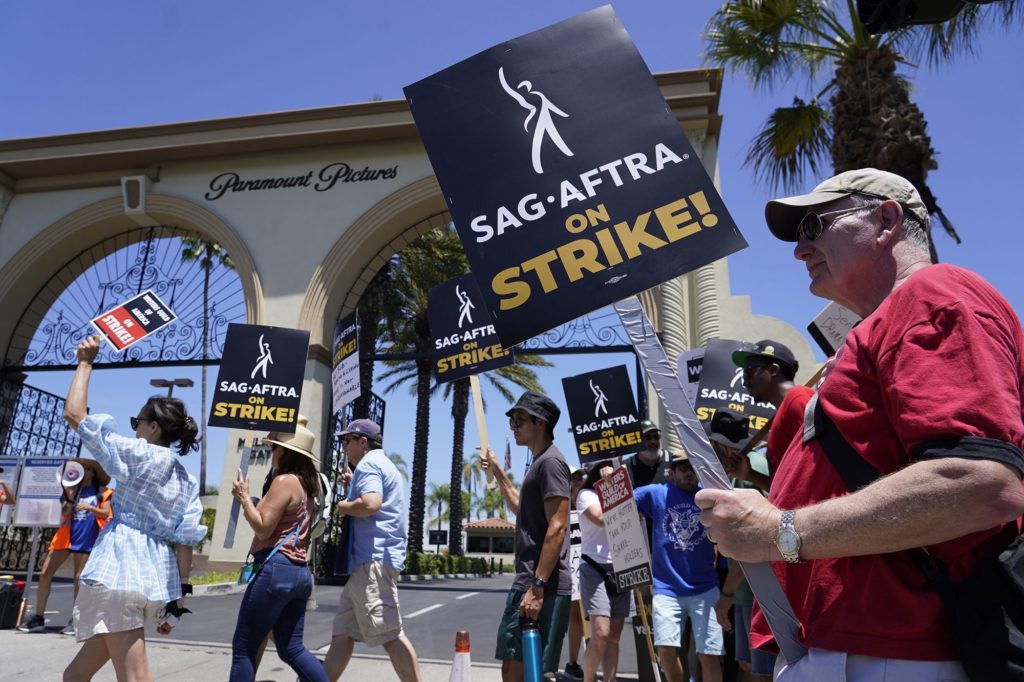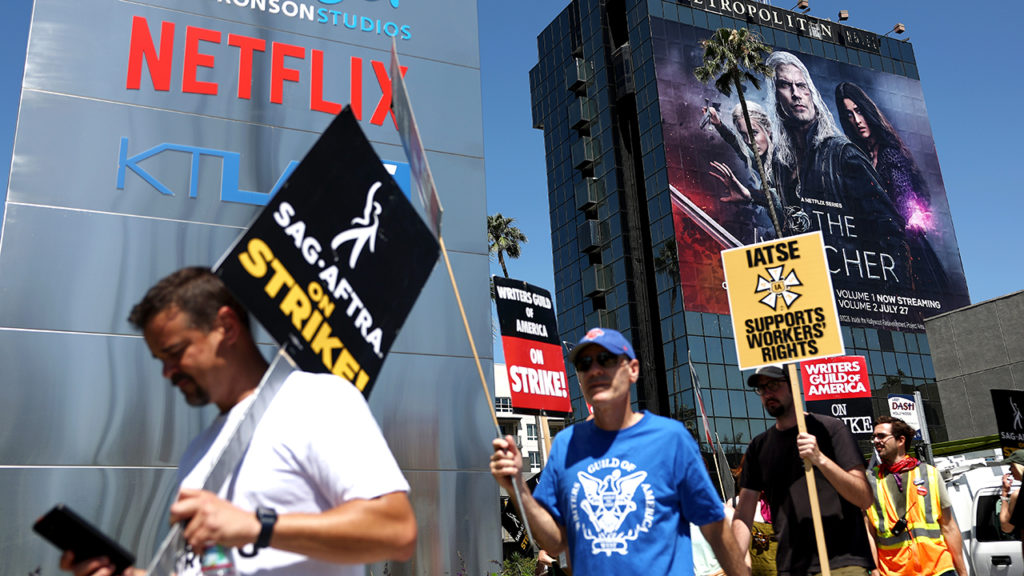It’s no secret that Hollywood’s finest writers and actors have protested in the streets of Hollywood in solidarity with their unions, WGA and SAG-AFTRA. The news made headlines this past summer and has continued to gain attraction as industry officials began to comment, discuss and suggest the future of the industry, including the use of AI in filmmaking, ownership and pay.
Looking back, the history of labour strikes often stands as a testament to the delicate balance between creativity, commerce, and now, the encroaching influence of artificial intelligence (AI). The recent strike actions by the Writers Guild of America (WGA) and the Screen Actors Guild-American Federation of Television and Radio Artists (SAG-AFTRA) have once again thrown this equilibrium into stark relief, underscoring the significant impact of these labour disputes on the film industry and their intersection with the rise of AI.
The Writers Guild of America (WGA), a storied institution representing screenwriters, has a history of engaging in strikes to demand fair compensation for their creative contributions. The most recent strike, fueled by concerns over streaming residuals and compensation for shorter seasons, reflects the evolving landscape of content distribution. With streaming platforms proliferating and traditional models of content production being upended, the WGA’s fight is a harbinger of the industry’s struggle to adapt and accommodate the changing dynamics of media consumption.

What adds an intriguing layer to this struggle, is the looming presence of artificial intelligence. AI-driven algorithms, capable of generating scripts and content, present both an opportunity and a challenge for writers. While AI can be harnessed to streamline certain aspects of content creation, it also raises questions about the uniqueness and authenticity of human creativity. The WGA’s demands for fair compensation take on a new dimension as the industry grapples with the question of how to fairly reward human ingenuity in a landscape where AI-generated content is on the rise.
On the other side of the coin, SAG-AFTRA’s strike resonates with the challenges faced by actors in an era of rampant digital manipulation and data-driven content creation. The proliferation of deepfake technology and the use of actors’ likenesses beyond their consent has prompted demands for stronger protections and regulations. SAG-AFTRA’s efforts to secure fair compensation for the use of an actor’s image beyond the screen are not just about financial gains; they signify a bid to maintain artistic integrity and personal agency in an age of ever-advancing technology.

The rise of AI technology, however, adds a layer of complexity to this struggle. As AI becomes more proficient at replicating human performances and even creating entirely new digital avatars, the question of an actor’s “likeness” extends to digital constructs as well. This amplifies the importance of SAG-AFTRA’s fight, as the industry navigates the uncharted territory of AI-generated characters and the potential for misuse and misrepresentation.
The impact of these strikes on the film industry is manifold. From stalled productions to delayed releases, the ripple effects are felt across the entire value chain. High-profile projects find themselves in limbo, and studios grapple with the challenge of managing budgets and schedules in the face of uncertainty. While the immediate financial repercussions are palpable, the long-term consequences go deeper, fundamentally altering the industry’s power dynamics and shaping the discourse around creative ownership and labour rights.
As streaming platforms become the primary distribution channels for content and AI infiltrates content creation, the traditional avenues for monetizing creative works are undergoing a seismic shift. The WGA’s demands for fair compensation in the streaming era and SAG-AFTRA’s fight for control over an actor’s likeness extend beyond human performers into the realm of digital creations, illustrating the pressing need for industry-wide regulations and ethical considerations.

With the overview, the history of strikes within the entertainment industry has often been a reflection of the broader societal, technological, and now AI-driven shifts. The recent actions taken by the Writers Guild of America and SAG-AFTRA exemplify this dynamic, shedding light on the evolving challenges faced by writers and actors in an era of digital disruption and AI augmentation. The impacts of these strikes ripple beyond immediate financial losses, sparking conversations about the rights, compensation, and creative autonomy of those responsible for shaping the cinematic landscape. As the film industry continues to navigate this tumultuous terrain, the integration of AI further emphasizes the need for thoughtful consideration of the relationship between human creativity, technological innovation, and the future of entertainment.

